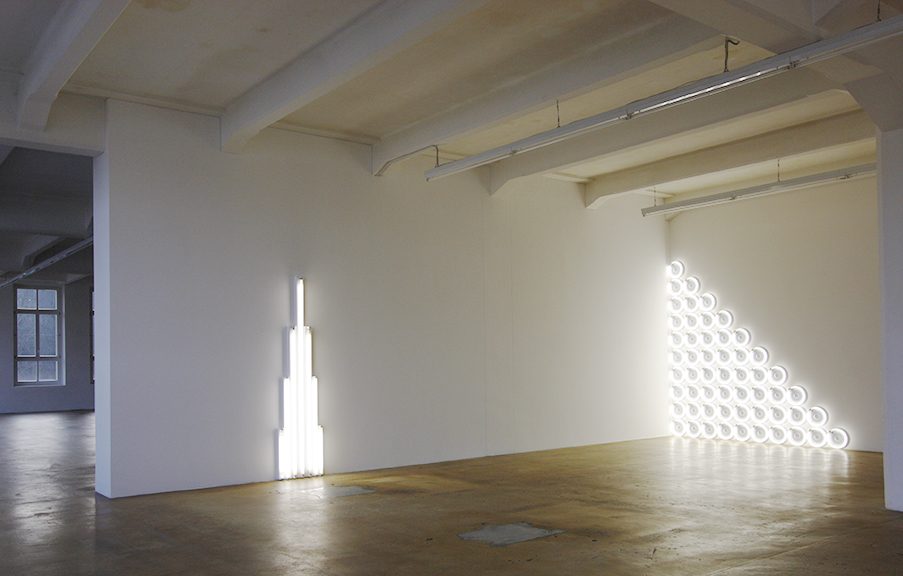[:en]Dan Flavin (1933–1996) works in the medium of light. In 1963, his discovery of the commercial fluorescent tube as a material with which to structure walls and – later – entire rooms marked the birth of Minimal Art. The artist used white and coloured fluorescent tubes in the standard sizes at that time available everywhere. He positioned their fixtures in geometrically clear forms, first of all like “pictures” on walls and then also diagonally across corners of rooms and inside rooms. The effect created by his works thereby derives just as much from the respective arrangement of the fluorescent tubes as from the lighting itself and its radiation beyond its physical source. Flavin’s installations are equally capable of dissolving architecture as of emphasizing it. Another form of emphasis can be seen in the personal dedications with which Flavin furnished his works, and which are contained in their title: these dedications establish an additional, separate level of relationship between work and viewer.
In the Hallen für Neue Kunst in Schaffhausen Flavin was represented during 30 years with wall and corner pieces, including art-historically significant early works such as “The Diagonal of May 25, 1963,” “The Nominal Three (to William of Ockham)” (1963) and “Monument I for V. Tatlin” (1964).[:de]Dan Flavins (1933 – 1996) Medium ist das Licht. Seine Entdeckung der handelsüblichen Leuchtstoffröhre als Material zur Strukturierung von Wänden und – später – ganzen Räumen markiert 1963 die Geburtsstunde der sogenannten Minimal Art. Flavin verwendet die Leuchtröhren in den (damals) überall erhältlichen Normgrössen, Weiss- und Farbtönen. Er positioniert ihre Halterungen in geometrisch klaren Formen zunächst wie „Bilder“ auf Wänden, dann auch diagonal vor Raumecken und in Räumen. Die Wirkung seiner Werke besteht dabei ebenso aus der jeweiligen Anordnung der Halterungen wie aus dem Licht und dessen Ausstrahlung über die eigentlichen Objekte hinaus. Flavins Werke sind sowohl in der Lage, die Architektur aufzulösen wie sie zu betonen. Ein emphatischer Aspekt ist, dass Flavin seine Werke in der Regel mit einer Widmung versieht, die eine zusätzliche, eigene Beziehungsebene zwischen dem Künstler und den Betrachtern schafft.
In den Hallen für Neue Kunst in Schaffhausen war Flavin während 30 Jahren mit Wand- und Eckwerken („corner pieces“) vertreten, darunter historisch bedeutenden Frühwerken wie „The Diagonal of May 25, 1963“, „The Nominal Three (to William of Ockham)“, 1963, und „Monument I for V. Tatlin“ von 1964.[:]
